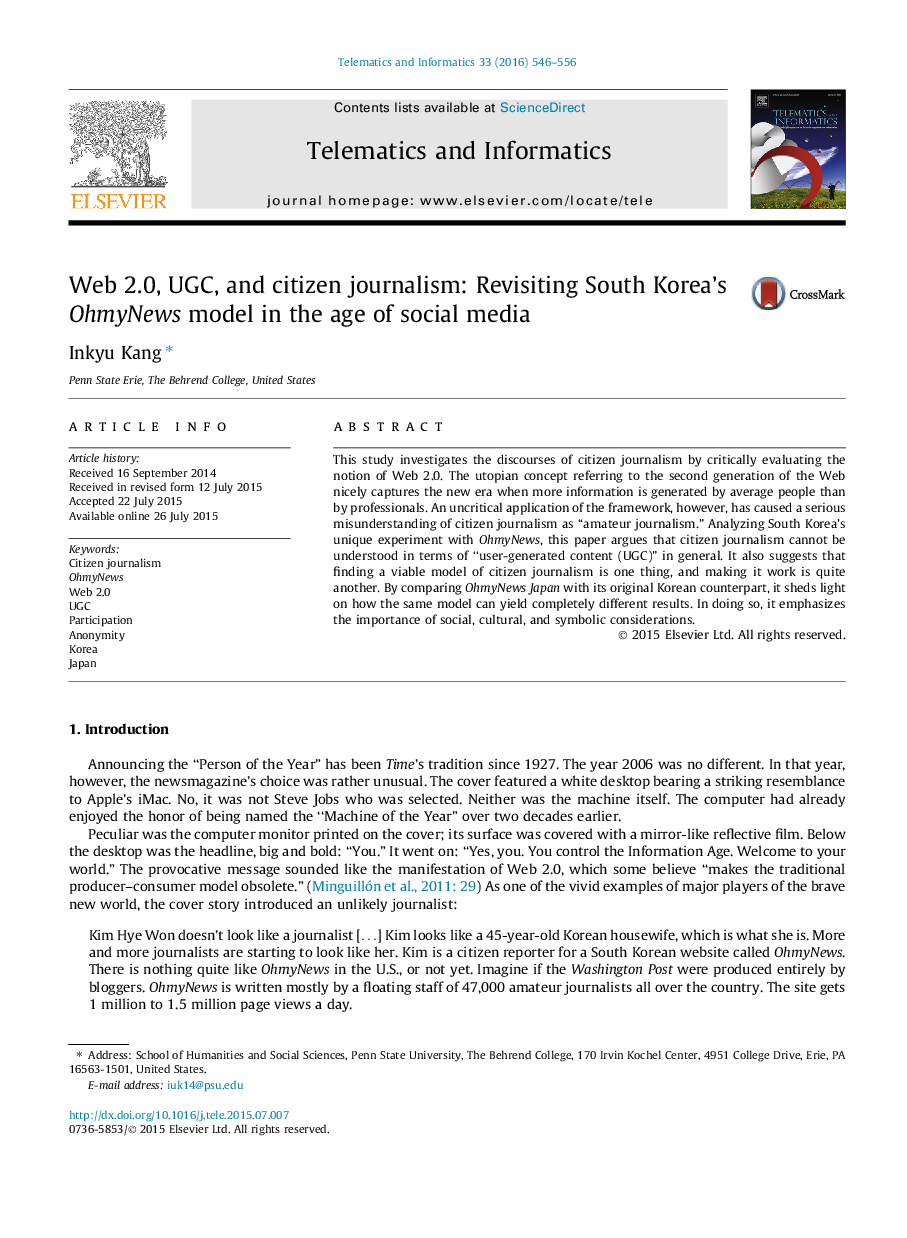| Article ID | Journal | Published Year | Pages | File Type |
|---|---|---|---|---|
| 465988 | Telematics and Informatics | 2016 | 11 Pages |
•The “Web 2.0” discourse has contributed to the dismissal of citizen journalism “amateur journalism.”•The hybrid model of OhmyNews shows the need for redefining “citizen journalism.”•South Korea’s citizen journalism model was introduced in Japan, but it soon failed.•Unlike in Japan, online anonymity has not existed in Korea due to its “real-name” policies.•The study of citizen journalism must include social, cultural, and symbolic considerations.
This study investigates the discourses of citizen journalism by critically evaluating the notion of Web 2.0. The utopian concept referring to the second generation of the Web nicely captures the new era when more information is generated by average people than by professionals. An uncritical application of the framework, however, has caused a serious misunderstanding of citizen journalism as “amateur journalism.” Analyzing South Korea’s unique experiment with OhmyNews, this paper argues that citizen journalism cannot be understood in terms of “user-generated content (UGC)” in general. It also suggests that finding a viable model of citizen journalism is one thing, and making it work is quite another. By comparing OhmyNews Japan with its original Korean counterpart, it sheds light on how the same model can yield completely different results. In doing so, it emphasizes the importance of social, cultural, and symbolic considerations.
